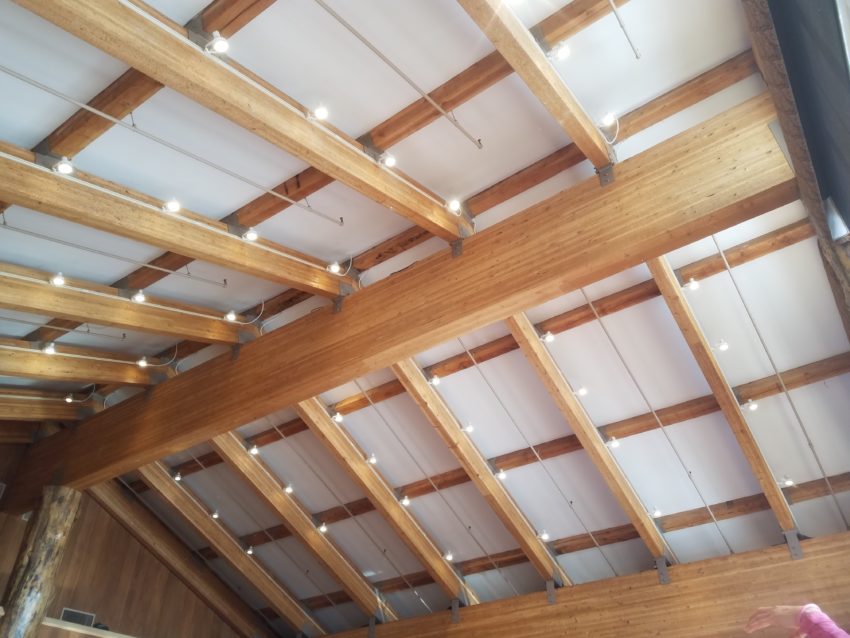The goal of this post is to encourage people who are considering building a new home to go all electric. The main reason to do this is environmental. At the moment going all electric may cost a little bit more because of a lack of market penetration. However the cost disadvantages of the equipment required for a high efficiency all electric home are rapidly shrinking. Furthermore, these higher upfront costs are offset by operational efficiencies, and do not take into consideration externalities like environmental pollution, supply disruptions, and the increased independence enabled by an all electric home with the simple addition of photovoltaic panels and batteries.
| Before we can dig into the idea of making all new home construction all electric we should have a fairly good idea of where the energy is being used right now and where it comes from. This link is to the Energy Information Administration and is an analysis of the energy consumption of various home types in the United States. The first thing to note is that space heating is the largest energy usage category in U.S. homes followed by water heating, other / plug loads, air conditioning, lighting, and then refrigeration. As such, any high efficiency home is going to have to get that space heating number down to make a major impact in energy usage. https://www.eia.gov/energyexplained/use-of-energy/homes.php |
| The first thing to do when addressing the largest home energy user of space heating is to look at efficiency. The reality is that the most critical element in an efficient HVAC system is an air-tight and well insulated envelope. Providing an efficient envelope can drastically and permanently reduce energy used for space heating without any further maintenance or operational inputs. Do it once, do it right. https://www.ny-engineers.com/blog/energy-efficiency-upgrades-the-building-envelope |
| In addition to an well insulated and air-tight envelope appropriate architectural design can improve the envelope performance of any building regardless of location. Simple features such as overhangs and appropriately placed windows and shading can make a tremendous difference in the thermal loads a given structure will have to deal with. High efficiency windows with generous southern exposures can let heat in on cold winter days and overhangs can block the sun on hot summer days. These simple design features create lower heating energy requirements in the winter and lower cooling energy requirements in the summer. https://www.energy.gov/energysaver/energy-efficient-home-design/passive-solar-home-design |
| Once you have an efficient envelope you can begin to look at high efficiency heating units run by electricity. One of the proven cost effective and widely available technologies is heat pumps. Advances in this technology have made all electric heat pumps feasible in most climate zones. https://zeroenergyproject.org/2020/01/22/achieve-comfort-and-reliable-performance-with-cold-climate-heat-pumps/ |
| Combine a high efficiency heat pump with radiant flooring and you have a super high efficiency and high quality heating system that has additional benefits such as improved air quality and a system that is effectively silent when operating. This information is brought to you from the neutral third party of the government. To get a feel for what these systems can actually do check out any website that is selling the stuff! https://www.energy.gov/energysaver/home-heating-systems/radiant-heating |
| Although this source is selling heat pumps they have a chart listing operational costs of various heat sources. Using an air-to-air heat pump achieves operational parity with natural gas according to their chart and ground source heat pumps are superior. Take these exact numbers with a huge grain of salt as prices for both can fluctuate drastically. However, one thing that gas can’t do is be generated from your rooftop or achieve a coefficient of input to useful output energy higher than 100% as heat pumps can. https://www.123zeroenergy.com/how-it-works/cold-climate-heat-pumps.html |
| Space heating is not the only opportunity for electrification and energy efficiency. This report indicates that while most homes have some mix of LED, Florescent lighting 11% of homes are still fully lit by incandescent light bulbs. Even though it is only 5% of the total energy usage in homes there is no need to use less efficient forms of lighting to get the same result. While slightly more costly up front building all new homes with 100% LED’s is one of the lowest hanging fruit for improving energy efficiency. https://www.eia.gov/consumption/residential/reports/2015/overview/index.php |
| Refrigeration is the next big line item energy user. This company has been making high efficiency and high performance refrigerators for decades now. http://www.sunfrost.com/ |
| Another argument against all electric homes is that electricity comes from coal which is dirtier than natural gas. The reality is that electricity is getting cleaner every year as wind and solar increase their share of electricity generation. Coal is falling rapidly and natural gas is taking some of that slack anyway. This is another reason we need to build all new homes to be all electric and take advantage of that trend starting now. https://www.energyvanguard.com/blog/1-reason-have-all-electric-home |
| All electric homes are here to stay because… ‘“Electrification provides a magnitude of [greenhouse gas] reduction that cannot be matched by energy efficiency measures,” SMUD project manager Owen Howlett told the California Energy Commission at a June workshop.‘ Yeah. That’s right. https://www.greentechmedia.com/articles/read/all-electric-homes-are-becoming-the-default-for-new-residential-constructio |
| It is time to go all electric for residential homes and really for all new construction. The technology is already here and competitive. The other reality is that converting to all electric saves some money up front because none of the natural gas or propane infrastructure has to be built, installed, or maintained. Everything can be run from the same wires. https://www.greenbuildingadvisor.com/article/efforts-to-ban-gas-hookups-in-new-construction-widen |
| Just in case it is not already clear that all electric homes are not a pie in the sky dream, I would like to point at that about 25% of U.S. homes are already all electric according to the U.S. Energy Information Administration. At the moment these homes tend to concentrate in the Southern regions of the U.S. where space heating concerns are negligible. https://www.eia.gov/todayinenergy/detail.php?id=39293 |
| Getting back to the question of sustainability. If you have an all electric home it is much easier to get to net zero. When all these various efficiency components come together, you can get a very high efficiency home. So efficient that the entire house can supply it’s own energy over the course of a year from photovoltaic panels on the roof. Granted the house is still connected to the grid, but that is what sustainable operations look like! If any of the space heating, air tightness, or design elements are improved further these buildings could start to generate more electricity than they use without even adding solar panels. https://www.cnbc.com/2019/02/14/homes-that-produce-their-own-energy-might-be-the-future-and-california-is-inching-closer.html |
| Last but not least. Let’s talk about resilience and independence. If you have an all electric home, you can install a battery and photovoltaic panels and continue to have power to keep your food fresh and your house comfortable even during power outages. If your propane runs out or the 100 year old natural gas pipe breaks from lack of maintenance you have to wait for a construction crew to fix it or go out and get more propane instead of just waiting for the sun to shine. The sun will inevitably continue to shine, every day, as it has done for the last 4.5 to 4.6 billion years. And at night… that’s what the batteries are for. https://www.tesla.com/powerwall |
I hope that this post has convinced you that all electric homes are the future of housing in the same way that all electric vehicles are the future of ground transportation.
Further Reading
- https://www.probuilder.com/are-all-electric-homes-future
- https://www.buildingscience.com/
- https://www.probuilder.com/retrofitting-existing-homes-will-be-vital-reaching-emission-targets
- https://www.energyvanguard.com/blog/1-reason-have-all-electric-home
- https://www.greentechmedia.com/articles/read/a-boom-is-coming-for-all-electric-homes-despite-lag-in-consumer-awareness
- https://www.greentechmedia.com/articles/read/what-does-it-take-to-electrify-everything-in-your-home
- https://www.nytimes.com/2020/02/04/business/all-electric-green-development.html
- https://www.youtube.com/watch?v=q8tyVJ_QA70
- https://www.phius.org/what-is-passive-building/passive-house-principles
- https://cleantechnica.com/2020/10/20/the-high-performance-all-electric-home/
- https://grist.org/energy/hot-real-estate-tip-an-all-electric-home-will-probably-save-you-money/
- https://icl.coop/electric-homes-safer/
- https://rmi.org/all-electric-new-homes-a-win-for-the-climate-and-the-economy/
- http://www.ibew.org/media-center/Articles/20Daily/2012/201209_ChicagoLocal

